DON'T MAKE CASH THAT SPIES ON US
The future of money can't be a dystopia
of surveillance and censorship.
The US is one of many countries considering a Digital Currency, digital cash issued by the government rather than a commercial bank. Our existing digital payment system is filled with transaction fees, harmful surveillance, and exclusionary practices. Some argue a digital currency could make that better—but one thing’s for sure: a bad digital currency would make it much, much worse.
Sign on now to demand that any digital currency the US government might pursue be surveillance free, censorship free, and accessible. Digital cash must function just like paper cash—or be more rights-preserving.
THIS PROJECT IS SUPPORTED BY:

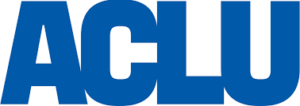
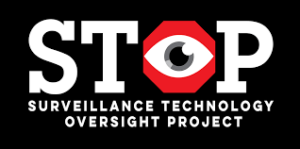



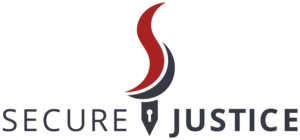


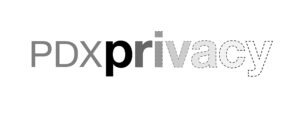

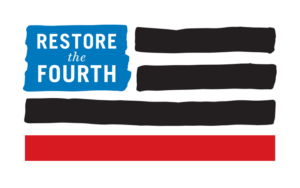
EXPERTS AGREE: CASH SHOULDN’T SPY ON YOU
Frequently Asked Questions
Central Bank Digital Currencies (CBDCs) are digital forms of money issued by the government’s bank and widely available to the public. In the US, the Federal Reserve might issue such a digital currency, but it could also be issued by other agencies such as the Treasury Department. We already hold money in digital forms through our bank accounts, payment apps, and online exchanges. The main difference between CBDCs and existing forms of digital money is that they will be a liability of the government via the Central Bank instead of a commercial bank.
They are typically tied to the value of a country's fiat currency - the dollar in the US. Technologically, they can be implemented in various forms ranging from versions similar to cash that are low-surveillance and accessible, or versions like China’s that give the government access to all transactions. They can be built on a blockchain, or using a centralized account.
A U.S. CBDC could have profound implications for everyone. It would impact the protection of consumers, investors, and businesses; data privacy and security; financial stability and systemic risk; crime; national security; the ability to exercise human rights; financial inclusion and equity; energy demand and climate change.
President Biden’s March 2022 Executive Order introduced a possible CBDC as a way to further the US’ interests in:
- reducing the risks that digital assets pose
- responsible financial innovation
- expanding access to safe and affordable financial services
- reducing the cost of domestic and cross-border funds transfers and payments
- continued modernization of public payment systems.
But there are differing philosophies on what a US CBDC would look like.
Recently, Federal Reserve Chair Jerome Powell outlined four qualities that a hypothetical digital currency in the U.S. must have, stating that it needs to:
- ensure user privacy
- be identity verifiable - this is similar to the way bank accounts are identifiable to prevent money laundering but would mean that it couldn’t be anonymous
- be intermediated or widely embraced by the current banking system
- serve as a widely accepted means of payment.
Earlier, in March 2021, the Electronic Currency And Secure Hardware (ECASH) Act was introduced to direct the Treasury, not the Federal Reserve, to develop and issue a digital version of the US dollar. This e-cash is intended to “replicate and preserve the privacy, anonymity-respecting, and minimal transactional data-generating properties of physical currency instruments such as coins and notes to the greatest extent technically and practically possible,” without requiring a bank account.
There are some possible benefits to CBDCs:
- It could ensure financial access for unbanked and underbanked people.
- It could make it easier to distribute public benefits and improve public payment systems.
- It could also help remove intermediaries like Visa, PayPal, and big banks, which could increase privacy for everyday people, reduce risks and transaction costs, be more efficient, and be less discriminatory and exploitative.
There are also glaring concerns for privacy and security:
- It could create a government record of every financial transaction using the CBDC currency, no matter how small—allowing the government to identify users and track transactions with a new and wholly inappropriate level of ease.
- It could worsen accessibility issues for economically disadvantaged people, less-digitally literate people, and people without Internet access if not properly implemented.
- Without the right infrastructure and design in place, it would involve intermediaries similar to the existing system
The question “how?” might have been repeatedly coming up as you read through this. It’s one we have as well. This is a developing area - a lot is still getting figured out. We are keeping our ears to the ground and you should too! However this is done technically, these are the essentials:
- CBDCs must be surveillance free, accessible, inclusive, and permissionless. They cannot be a surveillance instrument to be easily manipulated by governments or bad actors. We don’t want a government-run currency that creates a government record every time it is used.
- Effective data privacy legislation must be put in place. We should not even consider a new financial system that might give away even more data without having any sort of baseline regulation for data privacy in the U.S.
- At every step, this process must center and be led in part by stakeholders from communities that have been traditionally marginalized by existing financial systems, over-surveilled, and censored. CBDCs by design must work as an active force to counter existing inequalities, not exacerbate them.
- There must be clear, specific, and future-proof safeguards in place to protect privacy, civil liberties, anonymity, and free expression. Such features should, to the greatest extent possible, be built into the technology used, rather than be protected merely by policy.
- The government needs a measured response backed by studies, stakeholder feedback and independent audits.
Learn more about Digital Cash
- ACLU: We Need Digital Cash That is Actually Like Cash
- The ECASH Act with Rohan Grey
- The ECASH Act
- The Federal Reserve: What is a Central Bank Digital Currency?
- The Federal Reserve: CBDCs FAQs
- Edward Snowden: Your Money AND Your Life
- Executive Order on Ensuring Responsible Development of Digital Assets
- Rep. Lynch Introduces Legislation to Develop Electronic Version of U.S. Dollar
- Technical Possibilities for a U.S. Central Bank Digital Currency
- CBDC Tracker
- Statement: Emerging digital assets should protect users’ privacy and other rights
- Letter: Anonymity is not negotiable when it comes to digital cash